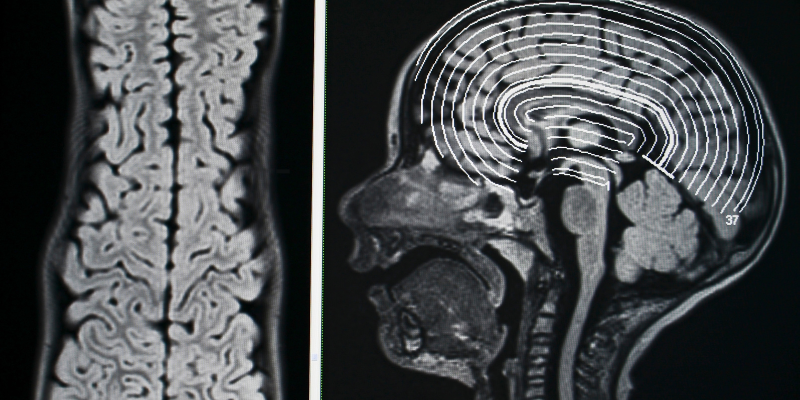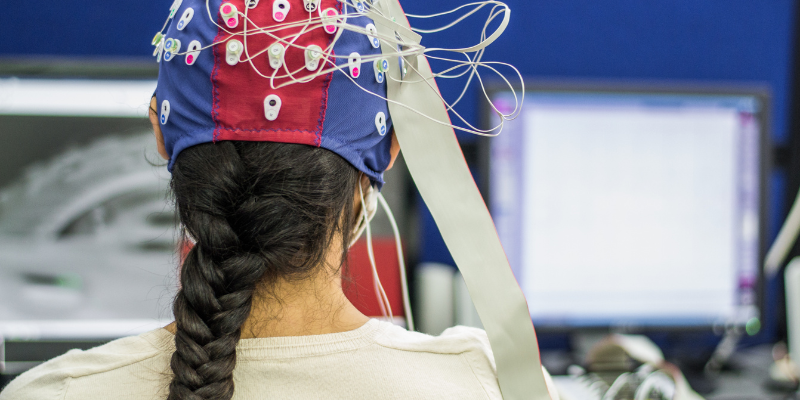Seizures can be sudden, startling, and often misunderstood. Whether you're someone with epilepsy, a caregiver, or simply curious, understanding the major types of seizures can make a world of difference. It includes recognizing symptoms, seeking appropriate care, and reducing stigma.
Seizures don't always appear as they are portrayed in movies. Some involve dramatic convulsions, while others are barely noticeable, like a blank stare or subtle muscle twitch. Because of this wide range, many people miss the warning signs or mistake them for something else.
Knowing the types of seizures helps in early diagnosis, better management, and a more compassionate response during an episode. It also empowers individuals and families to know epilepsy with greater clarity and confidence. In this blog, we’ll break down the major types, seizure symptoms, what causes them, and how they’re treated.

What Is a Seizure?
A seizure is a sudden, uncontrolled electrical disturbance in the brain. This can cause changes in behavior, movement, feelings, or levels of consciousness. Not all seizures look the same, they range from dramatic convulsions to subtle moments of confusion or stillness.
Seizures are typically categorized into two main groups:
- Focal (Partial) Seizures
- Generalized Seizures
Each group has subtypes with unique features.
1. Focal Seizures (Also Called Partial Seizures)
Focal seizures originate in one specific area of the brain. Depending on whether consciousness is affected, they’re further divided into:
A. Focal Aware Seizures
In focal aware seizures, consciousness is not impaired. Symptoms can vary widely. These may include muscle twitching, unusual sensations such as tingling, visual disturbances like flashing lights, or sudden emotional changes such as a wave of fear or anxiety.
These seizures typically last less than two minutes. For example, someone might experience a strange taste in their mouth or a sudden feeling of déjà vu while still being able to respond and communicate normally.
B. Focal Impaired Awareness Seizures
In focal impaired awareness seizures, consciousness is altered or impaired. Common symptoms include blank staring, repetitive movements such as lip smacking, and purposeless behaviors like walking aimlessly.
These episodes usually last between one and two minutes. After the seizure, it's common for the individual to feel drowsy or fatigued as they gradually return to full awareness.
2. Generalized Seizures
Generalized seizures affect both sides of the brain from the start and usually involve a loss of consciousness. There are several major types:
A. Tonic-Clonic Seizures (Formerly known as Grand Mal)
Tonic-clonic seizures are the most dramatic and widely recognized type of seizure. They typically begin with a sudden loss of consciousness, followed by a stiffening of the muscles.
These seizures generally last between one and three minutes. After the episode, the person may experience drowsiness, confusion, headache, or general fatigue. This type of seizure is often what people picture when they think of a seizure.
B. Absence Seizures (Formerly known as Petit Mal)
Absence seizures are characterized by sudden staring spells or a brief loss of awareness. These seizures typically last only 10 to 20 seconds and are most common in children between the ages of 4 and 14.
Because the symptoms are so subtle, absence seizures are often mistaken for daydreaming or inattentiveness. They can occur many times a day, often without the person realizing that anything unusual has happened.
C. Myoclonic Seizures
Myoclonic seizures involve quick, sudden muscle jerks that often feel like a startle or sudden jolt. These jerks can affect the arms, legs, or sometimes the entire body, and they typically last only a few seconds.
Despite the abrupt movement, consciousness is usually preserved. Myoclonic seizures are commonly seen in certain epilepsy syndromes. These occur especially in the morning.
D. Atonic Seizures (Drop Attacks)
Atonic seizures are marked by a sudden loss of muscle tone, which can cause a person to collapse to the ground or suddenly drop their head. These seizures are very brief, usually lasting less than 15 seconds. The impact of these seizures can be significant due to their abrupt and forceful nature.
E. Tonic Seizures
Tonic seizures involve a sudden stiffening of the muscles. It usually affects the arms, legs, or back. These seizures are typically brief, lasting less than 20 seconds, and often occur during sleep.
F. Clonic Seizures
Clonic seizures are characterized by repetitive, rhythmic contractive movements of the muscles, typically affecting the arms, legs, or face. The duration of these seizures can vary. They are often confused with the clonic phase of tonic-clonic seizures, but clonic seizures occur on their own and are less common.
Unknown Onset Seizures
When doctors can't determine whether the seizure started focally or generalized, it’s classified as an unknown onset. Over time, with more observation or testing (like EEG), the classification may be updated.
What Causes Seizures?
While epilepsy is the most common cause, seizures can also be triggered by:
- High fever (especially in children)
- Brain injury or trauma
- Stroke
- Brain tumors
- Infections (e.g., meningitis)
- Low blood sugar
- Genetic factors
- Sleep deprivation
In some cases, no cause is ever found, these are called idiopathic seizures.
Diagnosing Seizure Types
Accurate diagnosis is critical for effective treatment. Doctors typically use:
- Electroencephalogram (EEG): Measures electrical activity in the brain.
- MRI or CT scans: To identify brain abnormalities.
- Blood tests: To rule out infections or metabolic issues.
- Video EEG monitoring: Captures seizures while monitoring brain activity.
The more detailed the information, the better doctors can tailor treatment.

Treatment Options
Treatment depends on the type, frequency, and cause of seizures:
1. Medications (Anti-Seizure Drugs)
- First-line treatment for most seizure types.
- May need to try multiple drugs to find the right fit.
- Common examples: Valproate, Lamotrigine, Levetiracetam, Carbamazepine.
2. Surgery
- Considered for drug-resistant focal seizures.
- Involves removing or altering the brain area where seizures begin.
3. Vagus Nerve Stimulation (VNS)
- A device implanted under the skin sends electrical pulses to the brain to reduce seizures.
4. Ketogenic Diet
- A high-fat, low-carb diet is used mainly in children with hard-to-treat epilepsy.
5. Lifestyle Modifications
- Getting enough sleep, reducing stress, and avoiding triggers like flashing lights or alcohol.
Living with Seizures
Living with seizures can be challenging, but many people lead full, active lives with proper management. Key tips include:
- Medication adherence: Skipping doses can trigger seizures.
- Regular follow-ups: Keep your neurologist updated.
- Medical ID: Wear a bracelet or carry a card that identifies your condition.
- Seizure action plan: Helpful for schools, workplaces, or caregivers.
Final Thoughts
Seizures come in many forms, some are dramatic and obvious, while others are subtle and easily missed. Recognizing the different types helps ensure timely treatment, proper diagnosis, and better safety.
If you or someone you know is experiencing unusual symptoms like blackouts, confusion, or sudden movements, don’t ignore them. Consult a neurologist and get evaluated. Knowledge is the first step toward control, and with the right support, people with seizures can thrive.












